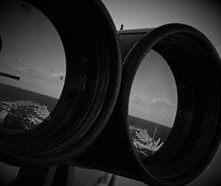
a story too important to ignore
Introduction – The Unexplained Explosion
July 17, 2019 will mark the 75th anniversary of the Port Chicago explosion, the worst disaster to take place on American soil during World War II.
Background
This coming July will mark the 75th anniversary of the greatest World War II disaster on American soil. At least three civilians were among the estimated 320 people killed in the massive explosion that rocked the Port Chicago Naval Ammunition Depot near San Francisco, California on July 17, 1944.
The pier was destroyed in the blast, as were the two ships docked there. The E.A. Bryan, loaded with 4,600 tons of ammunition, was obliterated. The S.S. Quinault Victory was a new ship slated for her maiden voyage; her broken remains lay half-buried in the Suisun Bay.

Only 51 bodies were found. The 270 military personnel listed as missing or unidentified included 202 Black seamen and 3 White officers as well as other military personnel from the U.S. Navy Armed Guard, Coast Guard and Maritime Service.
An additional 390 people suffered serious injuries. A mile away, in the small town of Port Chicago, every building was damaged. Damages were reported in San Francisco, nearly 50 miles north, and the effects of the blast were felt as far away as Nevada, 430 miles to the south.
The military base where the explosion took place opened in 1942 as the Naval Ammunition Depot – Port Chicago.The site, which lies 35 miles north of San Francisco, is now known as the Concord Naval Weapons Station(CNWS). The military base gained national attention in June 2018 when ABC News reported that the U.S. Navy was considering plans to convert the site into a detention center for up to 47,000 undocumented immigrants. After an outpouring of public protest, U.S. Government officials announced that plans to convert the base into a “migrant relocation camp” were not moving forward.
This was not the first controversy involving CNWS. Shortly after opening in 1942 it became the main depot supplying ammunition to the Pacific Fleet. Ever since opening in December of that year the area has had a checkered history.
The Navy Razes the Town
Twenty-four years later the U.S. Navy bought the small town, citing unspecified hazards. They evicted the residents, who protested to no avail, and razed the entire area.
The explosion of ’44 caused damage to buildings in the nearby town of Port Chicago.
Activists Protest
In 1987 Brian Willson, a Viet Nam veteran, lost his leg when a train failed to stop as he and other activists began a hunger strike on the railroad tracks “to block arms shipments headed for the Contras and President Ronald Reagan’s so-called “secret war” in Nicaragua.”
According to some reports, one notable resident, San Francisco 49er Dan Colchico, armed himself with a Winchester rifle. When two deputy marshals showed up to evict his family, Cochico chased them off his land.
Superfund Site
In 1985 the site was identified as one of 245 nuclear arsenals in the United States. Nearly a decade later later the U.S. Health Department found that past activities at the site “generated and released hazardous wastes into the environment.” CNWS was listed as a Environmental Protection Agency (EPA) Superfund site in 1994.
The GoMentum Station, a proving ground for self-driving cars, was established on the site in 2004.
The Port Chicago Explosion
The most historic event at the site occurred on July 17, 1944 when a massive explosion rocked the pier. Two ships were destroyed in the blast. The E.A. Bryan, loaded with about 4,600 tons of ammunition, was utterly obliterated. The S.S. Quinault Victory, a new ship slated for her maiden voyage, was broken in half. The tip of her remains stood upright in the Suisun Bay like two dancing whales.
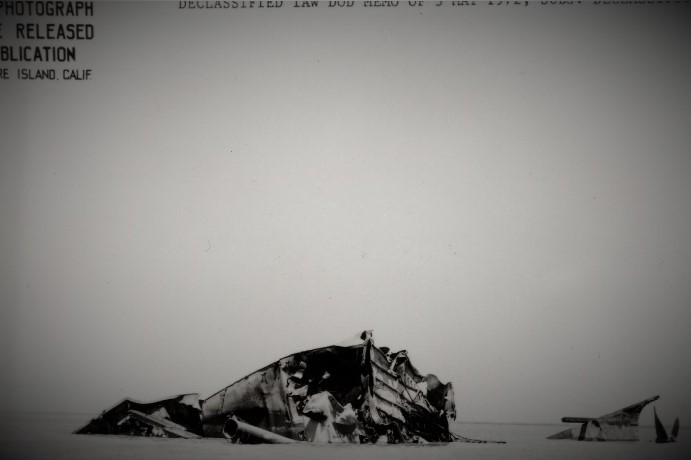
S.S. Quinault Victory
An estimated 320 people were killed in the blast, but only 51 bodies were found. Among those unidentified or missing were 3 White officers and 269 other military personnel, including 202 African-American recruits.
It was the greatest homefront disaster of World War II. The unexplained blast made international news; yet today few people know about the Port Chicago disaster and the mass courts martial that followed.
Unknown Cause
The Commandant of the Twelfth Naval District appointed a Court of Inquiry (COI) to investigate the facts surrounding the disaster. In their Opinion they stated
“…That the evidence does not show that there was any intent, fault, negligence, or inefficiency of any person or person in the naval services or connected therewith, or any other person, which caused the explosions.” [emphasis added]
Still, in many accounts the unexplained blast is blamed on the untrained Black seamen who, many say, may have been careless or mishandled the ammunition. (It was rumored that inexperienced White officers made the young stevedores race to load the ships bound for the war in the South Pacific.)
Nuclear Bomb Theory
Some people think the blast was the first full-scale nuclear explosion . Some believe it was accidental. An adamant minority are convinced it was an experiment conducted by the Manhattan Project, the secret program to develop the first atomic bomb.
I bet I know what you’re thinking:
“No way.
“Ludicrous. Never happened. Couldn’t have.”
“The first atomic bomb test didn’t take place until a year later, on July 16, 1945.”
“It’s just another conspiracy theory.”
“Prove it.”
Okay, maybe the nuclear bomb theory is wrong. After all, the Court decreed that we would never know the cause since all possible eyewitness died in the explosion.
On the other hand, eyewitness testimony is not always reliable. In ”Why Science Tells Us Not to Rely on Eyewitness Accounts.”, an article in the January 1, 2010 issue of Scientific American, writers Hal Arkowitz and Scott O. Lilienfeld point out that “Eyewitness testimony is fickle and, all too often, shockingly inaccurate.” They cite statistics from the Innocence Project where
“researchers have reported that 73 percent of the 239 convictions overturned through DNA testing were based on eyewitness testimony. One third of these overturned cases rested on the testimony of two or more mistaken eyewitnesses.“
Even if there had been eyewitnesses to the Port Chicago explosion it is unlikely that their testimony would have been very accurate. Besides, no one person would have had the whole picture. Instead of leading to a clear conclusion, the contradictory testimony of eyewitnesses could have caused more confusion.
Fortunately there are better ways to investigate the cold case. For historians the most important evidence comes from primary sources. These include documents, historic objects and other information created at the time period under study.
Several documents provide information about the conditions at the Port Chicago Naval Ammunition Depot and the activities that occured there before and after the historic explosion. Take, for example, this list recorded in the War Diary for July 1944:
Among the officers and technicians not assigned to duty in the Twelfth Naval District who visited Port Chicago immediately after the disaster were:
Capt. J. C. Byrnes, Jr., of the Bureau of Ordnance
Capt. Radfor Moses, of the Bureau of Ordnance
Comdr. M. G. Johnson, Bureau of Ordnance
Comdr. J. H. Sides, Bureau of Ordnance
Lt. Comdr. Dexter Bullard, Bureau of Ordnance
Capt. W. S. Parsons, from the Office of Chief of Naval Operations
Col. Crosby Field, of the Joint Army-Navy Ammunition Storage Board
Lt. Col. Ruel Stratton, of the Joint Army-Navy Ammunition Storage Board
Professor John F. Burchard, Chairman DOLOC Committee, Office of Scientific Research and Development [OSRD]
D. Max Beard, of the Naval Ordnance Laboratory [NOL], Navy Yard, Washington, D. C
E. Moss Brown, [NOL], Navy Yard, Washington, D. C.
One of these men, Captain William S. Parsons, will be a major “person of interest” in future posts of The Port Chicago Witness.
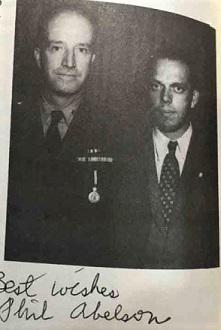
Parsons is best known as the Navy captain who armed the atomic bomb on the Enola Gay as that B-29 bomber made its fateful flight to Hiroshima in the early morning of August 6, 1945. For some reason very few history books identify him in his most important role: head of the Manhattan Project’s Ordnance Division at Los Alamos, New Mexico, where the atom bomb was created.
Why did Captain Parsons visit Port Chicago in the aftermath of the explosion? He was interested, he said, in the effects — not the cause — of the explosion. The preliminary memorandum he wrote to Rear Admiral William Purnell provides significant details about the destructive impact of the blast.
It would take a little more research to find out whether the COI ever got to see the preliminary memo (or any of those that followed), but there is no doubt they were aware of the document: one of the three people who served on the Court was Captain Jack Crenshaw, Parson’s brother-in-law.
Parsons did not indicate in the memo where he was just before he arrived in Port Chicago on July 20th or how long he stayed at Port Chicago. It is a reasonable assumption that he and Crenshaw, long-time friends, dined together, but without further evidence we can only guess what they talked about.
I wondered:
- Why was Parsons’ brother-in-law involved in the investigation?
What do you think?
Was there a nuclear test at Port Chicago?
IN MEMORIAM:
These are they who made the ultimate sacrifice
at Port Chicago on July 17, 1944
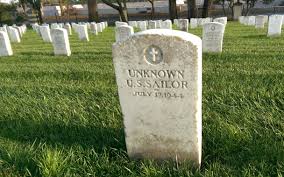
July 17, 1944
U.S. Naval Magazine & Naval Barracks (121)
S2c James C. Akins
CM3c Clarence Allen, Jr.
Lt. (jg) Maxie L. Anderson *
S2c Leslie K. Asahe
S2c Isaiah Ash, Jr.
S1c David Bacon, Sr.
S2c Henry W. Bailey *
CM3c Leonard Baker
S2c David Barnes, Jr.
S2c Joseph Battle
S2c Raphel O. Beasom
S2c Silas Bell
Lt. Thomas L. Blackman
S2c David E. Blackwell
S2c Thimon Blaylock
S1c Johnnie C. Borders
CM1c James H. Born *
S2c L.T. Bowden *
S2c Charles L. Boyce
S2c Alvin Brewer, Jr.
S2c James Bridges
S1c Walter L. Brooks, Jr.
F1c Johnnie L. Broome
S1c Ernest L. Burnett
S1c Wilbert Calvin
S2c Lawrence L. Carlin
S2c Robert A. Carter
Lt.(jg) John B. Christenbury*
S2c Eddie L. Clark
S1c Eugene Coffee, Jr. *
F1c Bill Coleman
S2c Enos Coley *
S2c Arthur A. Connor
S2c Frank Cooley
S2c Norman H. Craig
S2c Eddie L. Cross
S2c Jessie V. Crim
S1c Herman L. Curtis
S2c Horace Daniel, Sr.
S2c Huby Dansby
S2c Floyd M. Davis
S2c Henry J. Davis
S2c Willie Davis
S2c James L. Devaughn
S2c Nathaniel Dixson
S2c Rayfield D. Doyle
S2c Herman Dunbar
S2c Arthur L. Ebenezer
F2c Dunton I. Edwards
S1c Herbert L. Edwards
S2c Junice C. Ervin
S2c Luther Eusery
S2c Ananias Evans, Sr.
S2c Horace Evans
S2c John H. Evans
S2c William L. Evans
S2c John B. Felisbret
S2c Robert L. Ferguson
CM3c Clarence S. Fields
S2C Jessie Finney
S2c Matthew Forkner, Jr.
S1c Joseph R. Francis
S2c Ford S. Franklin, Jr.
S2c Artie J. Frazier
CM1c Elmer B. Froid
S1c Gerard Gabriel *
S2c Bennie L. Gaines
S2c Elgar Gant
S1c(CH) John S. Gibson
S2c Jethero Gilbert
S1c Samuel Glenn, Jr.
S1c Lewis D. Goudblock
S2c Harry L. Graham
S1c William H. Green
S2c Ross B. Grinage
S2c A.D. Hamilton
S2c Ernest E. Hamilton
S2c Emaral Hamm
S2c George R. Hammond
S2c John W. Hannan, Jr.
S2c Joe H. Hardaway
S2c John L. Harding
S2c B.C. Harris
S2c Roscoe A. Harris
S2c Phillip H. Harrison *
S2c Clifford Harvey, Jr.
S1c George W. Hayes
S2c D.C. Haywood
S1c Douglas L. Hector
S1c David L. Higginbotham
S1c Bobie R. Higgs
S1c Cluster Hill *
S2c Joseph Hills
S2c Charles W. Hite
S2c(SO) Rudolph V. Holden
S2c Stanford Holley
MoMM3c(T) Edred L. Holmes
S2c Ernest M. Howard
S2c Frank J. Howard
S2c Earl H. Hudson *
S2c Glen Hughes *
S2c Leroy Hughes *
S2c Theodore L. Hughes
S2c William Humphrey, Jr.
S2c Ross D. Hunt *
S2c Wave Hunt
S2c Rudolph W. Hunter
CM3c(T) Leroy Ingram
S1c D.C. Jackson
S2c James Jackson
CM2c James E.M. Jackson
S1c Levi R. Jackson *
S2c Paul E. Jackson
S2c Robert A. Jackson, Jr.
CM3c Samuel Jackson, Jr.
S1c Daniel L. Jamison
S1c Willie Jennings *
S2c Clarence Johnson *
S2c Earl T. Johnson
S1c Gabe Johnson *
S1c Harold Johnson
S2c Henry L. Johnson
Lt. (jg) James B. Johnson *
S1c Milton F. Johnson *
S1c Daniel L. Jones
S1c Ivery L. Jones
S1c Henry Joseph, Jr.
S1c Samuel Kearney
S1c(SC)(B) Calvin King
S2c Clifton King
S2c Verne Land
S1c Sidney J. LaPorte, Jr.
S1c Willie Law, Jr. *
S2c Cleo Lawson
S2c Caludius W. Leslie
S2c(SO) Aaron A. Lewis
S2c T.C. Lewis
S2c Lemuel M. Long *
S2c Robert Lyons
S2c Beattie J. Makins
S1c(CM) Rossell E. Martin
S2c(CM) Alonmo Martin
S1c Daniel Massie
S1c Lawrence Mathews, Jr.*
S2c Charles A. Mayfield *
S1c Mitchell McClam
CCM(T) Clarence K. McFarland *
S1c Calvin Milton
S2c Willis Mettles *
S1c Ernest C. Miller
MoMM3c Ira Miller, Jr.
S2c Otis K. Miller *
S2c Marshall Moore, Sr.
CM2c Thomas Moore
S2c William P. Moore
Ens. Gilbert Mordoh
S2c Eddie L. Neal
S1c James H. Nixon
S2c William H. Otky, Sr.
S2c Auguster Packer
S1c(SC) William F. Paschal
S2c Robert F. Peete
S2c Lester L. Perry
S2c Joe H. Person *
S2c Alfred Phillips
CM3c Charles Pickett
S2c Houston Porter
S2c McCoy Porter
S2c David W. Potts
SM3c(T) Samuel H. Powell
CM2c Joe C. Preuitt
S2c Arthur Reid, Jr.
CM3c James E. Rhodes
S2c Clyde F. Richardson
S2c James A. Roberts
S1c Mango Roberts
MoMM3c Alphonse Robinson
S2c Fred Robinson, Jr.
S1c Eugene J. Rogers
S2c Robert Sanders *
S2c Wesley Saunders
Lt. Roland Schindler *
CM3c Carl C. Scott
Lt. Vernon C. Shamer
S1c Joseph J. Sheckles
S2c Willie Sims *
S1c Isaac E. Smith *
S1c James P. Smith
S1c Ellis Taylor
S2c Joseph M. Tolson
MA2c Maxie D. Towles
S1c(CM) Mervin L. Van Dunk
S1c Issiah Wade
S2c Charles Walker, Jr.
S2c Walter L. Walker, Jr. *
S2c Woodrow L. Walker
CM2c(T) William C. Warren*
S2c James L. Washington *
S2c Woodrow Washington, Jr.
CM3c Daniel West
Lt. (jg) Raymond R. White *
S1c Joseph B. White
S2c Arthur Whitmore
S2c Mitchell A. Williams *
S2c Maryland E. Wilson
GM3c Oliver Wilson
S2c Samuel D. Wilson
Lt. Harold A. Wood *
S2c James E. Woods *
S2c Walter E. Wright
S2c Charles E. Wyatt
SS E.A. Bryan
U.S. Navy Armed Guard (13) and Maritime Service (31)
S1c Wayland E. Causey
S1c Rudy J. Cebella
S1c Robert E. Chase
S2c Claude L. Chastain
SM3c John J. Gee
Lt. (jg) Ralph B. Hartmann
S1c Clarence R. Hollandsworth
S1c Kenneth H. Muirhead
S1c Jesse W. Mulligan
S1c Lloyd J. Quick
S1c Martin J. Setzer
S1c George H. Singer
S1c Listern L. Small
Elmer A. Andraschko, Cook
Albert A. Arsenian, Seaman
William C. Benhart, Oiler
Martin M. Cacic, Seaman
Ray E. Davis, Wiper
Donald L. Dennon, Wiper
Thomas E. Dorsey, Seaman
George H. Falk, Bos’n
Marcus J. Franklin, Engr.
Alfred D. Gilbert, Engr.
James R. Gilstrap, Seaman
Joseph D. Grange, Jr, Engr.
Fred Hayes, Seaman
Delbert R. Hutchinson, Fireman
Peter C. Jepsen, Ch. Engr.
Charles A. Johnson, Utilityman
Clifford R. Johnson, Utilityman
Ralph A. Lantz, Seaman
John A. Louis, Engr.
Frank C. Malizia, Carpenter
Edward Maniago, Messman
Harry E. Nathan, Seaman
Jesse Porter, Sr., Ch. Cook
Richard D. Roberson, Seaman
Aaron C. Sangster, Jr., Seaman
Ellsworth M. Shaw, Oiler
Howard A. Smith, 1st Mate
Andrew Suchan, Fireman
Robert F. Townsend, 2nd Mate
Harding E. White, Messman
George H. Witt, Utilityman
SS Quinault Victory
U.S. Navy Armed Guard (17) and Maritime Service (36)
GM3c Jack L. Albin
GM2c Delbert P. Bergstrom
S1c(RM) Jack P. Bowman
GM3c John G. Hall
S1c George D. Hovland
S1c Andy Morrow
GM2c William H. Mulryan
S1c Henry J. Myers
S1c Woodrow A. Riiff
S1c Jacob D. Risenhoover
S1c William R. Robinson
S1c Charles H. Rondell
S1c Jay Rose, Jr.
S1c Otis K. Ross
S1c Woodrow W. Saint
S1c Arnold T. Sanders
S1c Harold S. Sano
Robert D. Bailey, Utilityman
Robert E. Bartlett, Messman
John D. Bell, Asst. Purser
Frederick E. Bentley, Seaman
Donald H. Cheney, Elect.
Hugh E. Crawford, Maint. Man
Floyd F. Crist, Seaman
Albert C. Dinde, Messman
Wallace M. Durland, Seaman
Kenneth J. Eulrick, Seaman
Burke E. Falor, Utilityman
Eugene W. Garrett, Fireman
Robert K. Henricksen, Seaman
Elis Henriksen, Engr. *
Johannes H. Justesen, Steward
Walter F. Kannberg, Engr.
Robert E. Keim, 2nd Mate
Joseph B. Koeninger, Seaman
Karl L. Mallery, Engr.
Lloyd K. McDaniel, Seaman
Kenneth M. Moen, 3rd Mate
Robert S. Morill, Oiler
Isadore E. Narinsky, Seaman
Roy L. Nelson, Carpenter
David R. Parsons, 3rd Mate
Mike Pearson, Oiler
Ellis B. Pinson, Engr.
Richard V. Potter, Fireman
Virgil R. Sandberg, Engr.
Albert R. Scott, Ch. Mate
Lester S. Skance, Seaman
Howard W. Sullivan, Seaman
Robert J. Sullivan, Master
Glen E. Thompson, Engr. *
Louis J. Widner, Messman *
John A. Williams, Ch. Engr.
Navy & Contractor Employees (6) and Other Military (6)
Lawrence C. Bustrack, Macco Co. Offc Mgr*
Gundar Halverson, Macco Co. Timekeeper *
Raymond V. Hunnicutt, Brkmn Navy Empl
Thomas D. Hunt, Macco Co. Project Engr. *
Harry A. Middleton, Engnman, Navy Employee
Fred Zanarini, Chauffeur Navy Employee *
Pvt. Elwin A. Blanke, Marine Corps *
BM1c Peter G. Broda, Coast Guard
MM1c William G. Degryce, Coast Guard
McMM3c Edward J. Portz, Coast Guard *
S1c Charles H. Riley, Coast Guard
S2c James C. Sullivan, Coast Guard *
* Identified Dead
from
National Park Service (NPS)
U.S. Department of the Interior
Port Chicago Naval Magazine National Memorial
P.O. Box 280, Danville, CA 94526
(925) 838-0249
www.nps.gov/poch
“I am gratified to learn that, as was to be expected, Negro personnel attached to the Naval Magazine Port Chicago performed bravely and efficiently in the emergency at that station last night. These men, in the months they served at that command, did excellent work in an important segment of the District’s overseas combat supply system. As real Navy men, they simply carried on in the crisis… in accordance with our Service’s highest traditions.”
Rear Admiral Carleton Wright, USN
Commandant, Twelfth Naval District
July 21, 1944
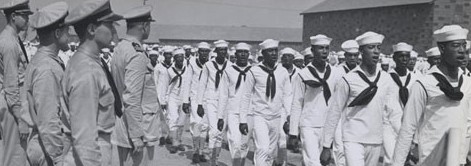
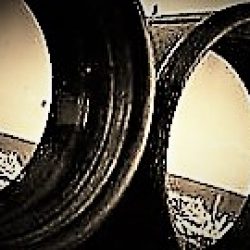
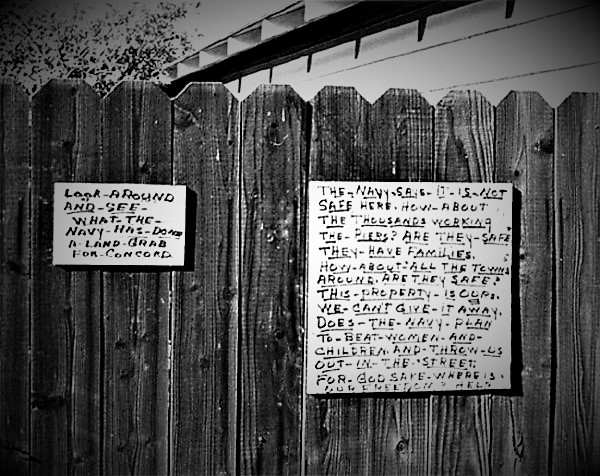
One Reply to “”